
Crypto influencer “Professor Crypto” deleted posts of him celebrating the award shortly after being accused of using bots to boost his following.
A crypto influencer has yet to publicly respond to accusations he used bots to manipulate his social media metrics and influence shortly after winning a “best content creator” award at a crypto event.
The investigator known as “ZachXBT” accused the influencer who goes by “Professor Crypto” on X of using “thousands of bots” to “deceive people into thinking you have an influence.”
He also implied the action could breach a United States Federal Trade Commission rule that “prohibits anyone from selling or buying fake indicators of social media influence, such as followers or views generated by a bot or hijacked account.”

After previously opposing another AI-related bill, SB 1047, OpenAI has expressed support for AB 3211, which would require watermarks on AI-generated content.
The artificial intelligence startup OpenAI, which is behind the ChatGPT chatbot, reportedly supports a new bill that proposes labeling content generated with AI.
OpenAI chief strategy officer Jason Kwon has expressed support for the bill AB 3211, which would require watermarks in the metadata of AI-generated photos, videos and audio clips, Reuters reported on Aug. 26.
According to the source, Kwon believes that marking AI-made material will help users differentiate such content from human-made content. The report noted that the enforcement of the bill would particularly be helpful amid growing misinformation about political candidates.

Tapping into underlying blockchain infrastructure, Nodle’s Click application allows users to authenticate media content for various use cases.
Decentralized infrastructure network provider Nodle has released the first version of its blockchain-based media authentication application called Click, which could prove useful in combatting artificially generated media and fake news.
As previously reported by Cointelegraph, Nodle has developed a software development kit (SDK) for its ContentSign solution, which cryptographically proves the integrity of data captured by mobile devices using blockchain technology.
The Click application supports the Coalition for Content Provenance and Authenticity (C2PA) and is a member of the Content Authenticity Initiative (CAI). The latter is a project led by Adobe and the Linux Foundation to create a future standard for media attestation.

CEO Robbie Yung said that while Animoca does not employ a specific allocation strategy nor an investment target, it will continue supporting new Web3 businesses and its portfolio companies.
Animoca Brands CEO Robby Yung says the Hong Kong-based gaming company intends to continue to support the creator economy and promote interoperability through its investments and other initiatives in 2024 to promote Web3 mass adoption.
Speaking to Cointelegraph at the 12th Global Blockchain Congress event in Dubai, Yung said that Animoca believes gaming will be a primary driver for Web3 adoption due to its widespread appeal. However, the company is also exploring adjacent verticals, such as education, to support creators through “efficient infrastructure and network effects.”
Yung emphasized that Web3 tools, such as publisher nonfungible tokens (NFTs), enable content creators to monetize their work in a decentralized environment that fosters a more equitable and lucrative platform, saying:

Web3 social media dApp Pop Social becomes the newest member of the Cointelegraph Accelerator program.
The growth of social media has made it possible for everyone to become a content creator. And while the creator economy grew, incentives to become part of it continued to diminish. Since the $100 billion market is dominated by a handful of centralized platforms, creators hardly ever see a fair compensation for their efforts.
YouTube, for example, has only recently started paying out a minor share (45%) of the ad money from Short videos to creators. Streaming platform Spotify also cuts 30% from ad revenue, leaving creators to share $0.003 to $0.005 with right holders and publishers per stream.
Add to this the growing concerns about data ownership and the lack of sustainable financial models, it becomes clear that the creator economy needs to reestablish itself by placing users and creators at its heart. As the digital landscape evolves, it’s crucial to utilize a decentralized approach to overcome the major challenges of the creator economy.
Pop Social, a Web3-friendly social media platform, combines SocialFi, Web3 and artificial intelligence (AI) to address the key pain points of content creation faced by users and creators alike. The platform aims to eliminate the exploitation of creators by providing fair compensation for creators while introducing a new mechanism to reward users for their engagement as well. To achieve this, Pop Social diversifies its revenue streams by including AdTech revenue, nonfungible token (NFT)-related earnings, Phygital Stores and Open-API subscription models, to ensure a sustainable financial foundation.
Using an on-chain unique profile ID and enabling users to bring their own IDs from other decentralized protocols, Pop Social goes all in for true content ownership. With the AI integration, users will be able to see personalized recommendations based on meritocracy rather than popularity. Pop Social uses AI to provide a more balanced experience for users while building a foundation for reliable information flow to prevent fake news through its platform. It aims to create a vibrant and inclusive social ecosystem by focusing on social recovery, user-controlled data privacy and transparent content moderation policies.
An integral part of the Pop Social ecosystem, Pop Labs operates as a launchpad for innovation, driven by generative AI, creator incubation, and project initiatives.
“We envision a future where Social, Web3, and AI convergence redefines how we interact, create, and thrive in the digital realm,” Michael Shen, CEO of Pop Social, told Cointelegraph. “At the heart of this vision is empowering individuals, content creators, and communities through a seamlessly integrated ecosystem.”
“SocialFi should aim to create an exciting and inclusive ecosystem where users, creators, and communities thrive financially while reaping the benefits of a decentralized, transparent, and secure social experience.”
Cointelegraph Accelerator welcomes Pop Social as a participant in its growing roster of promising projects. Given the disruptive potential the Web3-native social decentralized applications (DApps) hold against the $100 billion creator economy. With good traction regarding active users and app downloads, Pop Social has a founding team of experts who have substantial experience in the blockchain industry.

As AI capabilities continue to evolve, proving the authenticity of real-world images, video and content could hinge on blockchain solutions.
Decentralized network provider Nodle is working with the likes of Adobe and the Linux Foundation to use blockchain technology to prove the authenticity of real-world content captured by devices.
In correspondence with Cointelegraph, Nodle co-founder Garrett Kinsman outlined the firm’s upcoming software development kit for its ContentSign solution that will look to prove the integrity of data from its moment of capture using blockchain.
Nodle is bringing ContentSign to the Content Authenticity Initiative, a project it has joined that is being led by Adobe and Linux Foundation to create a future standard for media attestation.
Related: Blockchain IoT firm Nodle goes open source with Web3 Bluetooth ‘nanocomputer’ sticker
Nodle is developing a variety of blockchain-based technologies focused on capturing and authenticating real-world data. As Cointelegraph has previously explored, its main offering is a network leveraging smartphone bluetooth connectivity to rent computing power, storage and Bluetooth capability of devices to broaden the footprint of IoT networks.

Kinsman says that ContentSign is set to form part of this puzzle as a means to prove that a physical camera or device has captured a specific piece of visual media and its corresponding metadata.
“The way this is done is by having a stamp that proves that a genuine camera has captured the video, the video has been signed by the private key only known by this camera, and a footprint of this video has been published to a blockchain.”
The technology could prove useful for a myriad of use cases, including the field of journalism. As Kinsman explains hypothetically, a journalist can capture video or picture of a breaking news event using a camera embedded with ContentSign technology:
“As the video is recorded, ContentSign ensures it is stamped and signed with a unique private key exclusive to that specific camera.”
The footprint of the video is then minted as a non-fungible token on the Nodle blockchain. The signature validates that the content originates from a genuine source and hasn't been manipulated or artificially generated.
Kinsman adds that the current iteration has the service emulated on a mobile phone through ContentSign’s SDK but future implementations could mirror technology found in cryptocurrency hardware wallets:
“In the future, the camera will embed a secure element, similar to what you can find on a Ledger hardware wallet.”
Blockchain solutions similar to ContentSign could prove crucial as the generation of AI content amplifies, driving the need for solutions distinguishing between authentic and fabricated content.
“Blockchains, with their inherent characteristics of decentralization, transparency, censorship resistance, and immutability, provide an essential framework to anchor authenticity.”
Kinsman says that ContentSign is being directly explored as a solution for the insurance sector to process claims with accuracy and integrity. ContentSign will ensure that submitted visual proof for insurance claims are genuine and have not been tampered with or generated by AI.
Magazine: The Truth Behind Cuba’s Bitcoin Revolution: An on-the-ground report
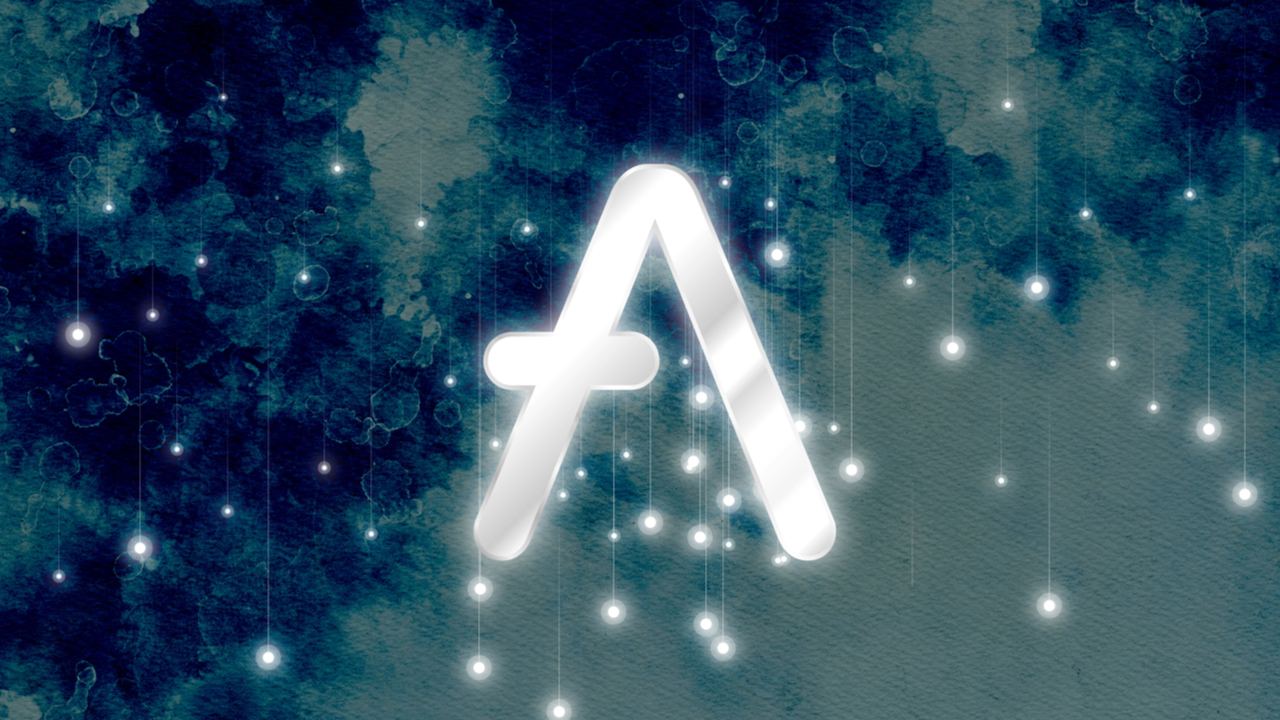 The blockchain firm Aave has launched the Lens Protocol, a social media project with applications built on the Polygon blockchain. Lens is similar to the social media platform Twitter but Lens profiles are linked to a non-fungible token (NFT) that can be ported into decentralized applications. Lens Protocol Is Live – Aave Founder Believes People […]
The blockchain firm Aave has launched the Lens Protocol, a social media project with applications built on the Polygon blockchain. Lens is similar to the social media platform Twitter but Lens profiles are linked to a non-fungible token (NFT) that can be ported into decentralized applications. Lens Protocol Is Live – Aave Founder Believes People […]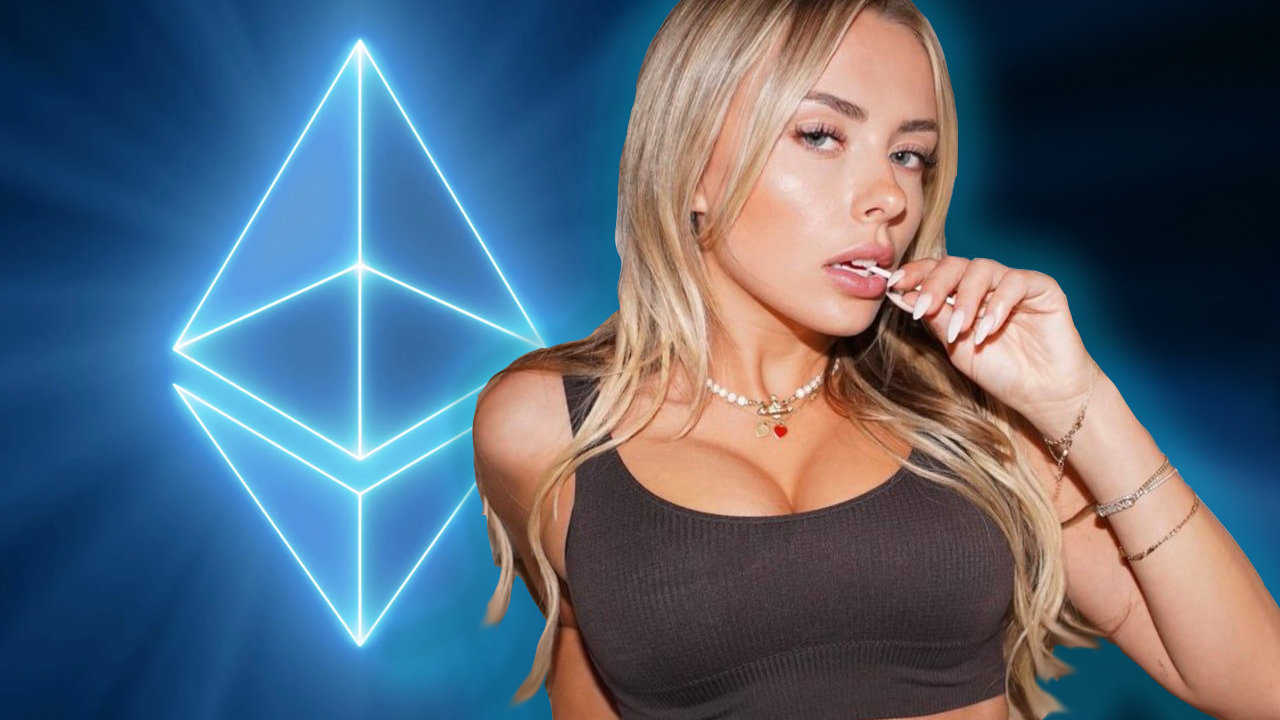 The internet content subscription service Onlyfans has announced the launch of a feature that leverages non-fungible token (NFT) technology. The newly-added feature, introduced on Thursday, gives Onlyfans members the ability to display authenticated NFTs as their profile pictures. Onlyfans Steps Into the Realm of NFTs The London-based content subscription service Onlyfans is well known for […]
The internet content subscription service Onlyfans has announced the launch of a feature that leverages non-fungible token (NFT) technology. The newly-added feature, introduced on Thursday, gives Onlyfans members the ability to display authenticated NFTs as their profile pictures. Onlyfans Steps Into the Realm of NFTs The London-based content subscription service Onlyfans is well known for […]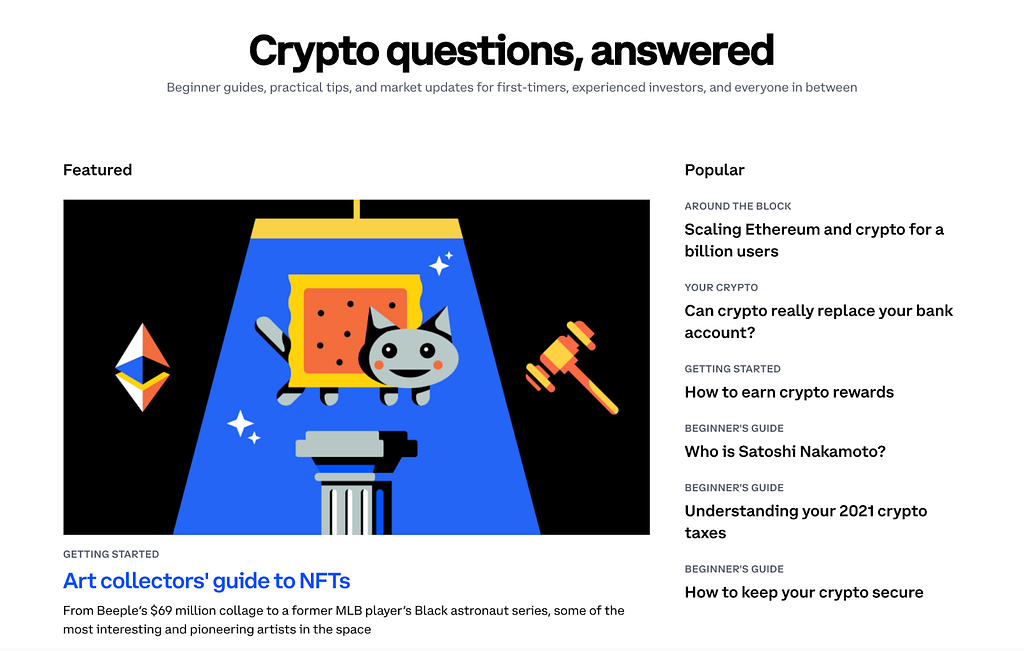
By Clay Kohut, Senior Software Engineer
TLDR: Over the past year, Coinbase has invested in tooling to eliminate static content across our web frontend. This is the story of how we did it and why it’s important.
The Coinbase educational portal, Coinbase Learn, launched in late 2020. Learn contains hundreds of beginner guides, practical tutorials, and market updates and is maintained by a dedicated team of content editors.
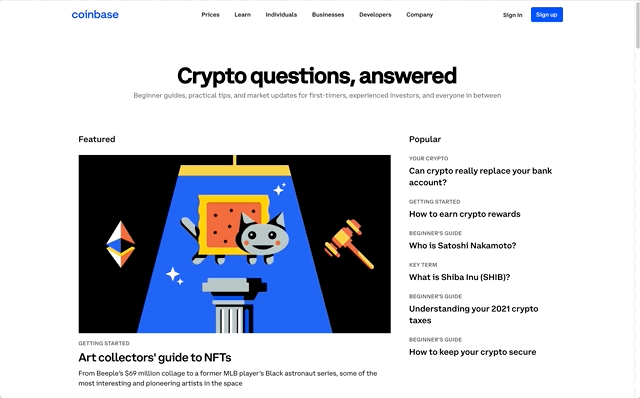
Our engineers explored various options for powering Learn. Ideally, we wanted a solution that would allow us to seamlessly integrate content into the Coinbase logged out experience.
Hosted options for blog-like content such as Medium provided too little flexibility.
The Wordpress framework was too opinionated and directly tied to the UI.
We ended up opting for a headless CMS, specifically Contentful. Contentful is a content platform that delivers a headless approach to content as well as backend extensibility to integrate with our preferred tools and ways of working. Being “headless” means the CMS is UI agnostic — it separates the content from the experience, simply providing structured JSON to the frontend, which allows for us to totally control the frontend experience.
Integrating with Contentful was simply a matter of creating data structures representing different types of content (via the Contentful UI) and then mapping those data structures to React components (which handled actually rendering the data)

With Coinbase Learn under our belt and the Coinbase Direct Public Offering (DPO) on the horizon, a cohesion initiative kicked off (deemed Project Flightsuit). Project Flightsuit sought to bring a cohesive look and feel across Coinbase logged out properties as well as enforcing design standards across newly created landing pages.
While investigating the state of the Coinbase product landing pages, we uncovered 40 product surfaces spread across 15 different repositories / frontend applications. The various frontends were built using a variety of technologies — everything from React with Typescript (our current standard) to legacy Ruby on Rails templates, to static HTML.
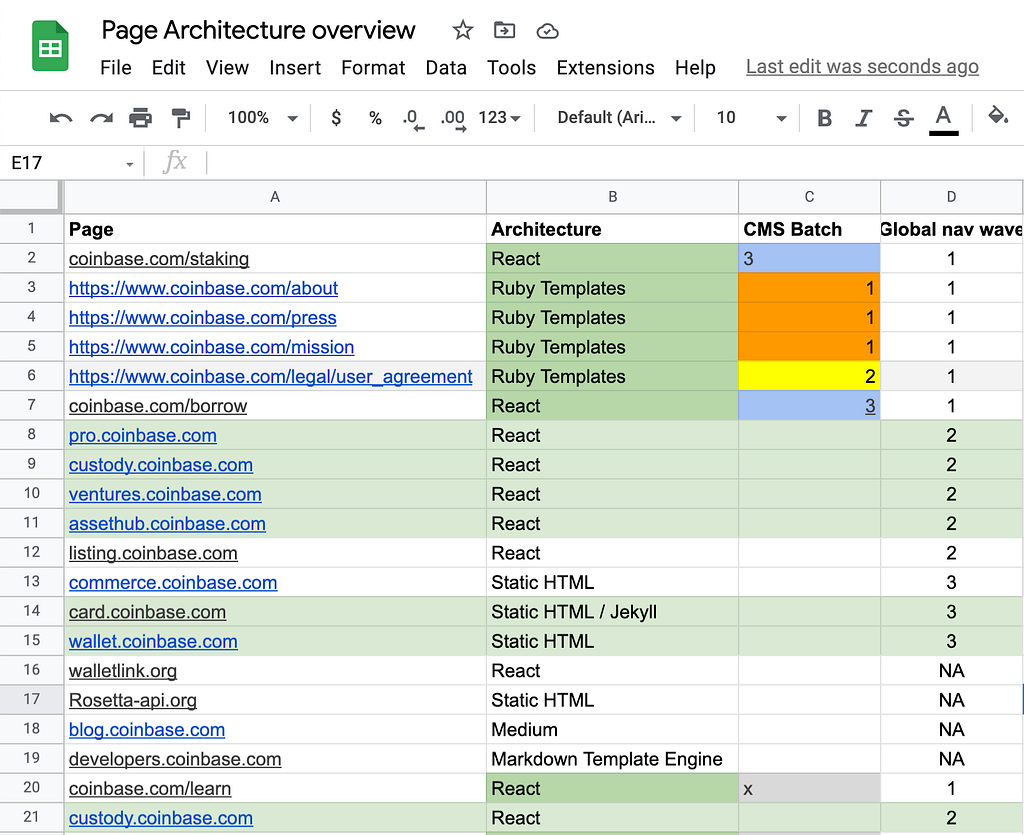
Leveraging the Contentful integration initially set up for Coinbase Learn, we began to create a set of “blocks” which could be used to standardize landing page layouts (while aligning around our new brand guidelines).
“Blocks,” also known as content types, are high-level components which combine to create landing pages. For example, a “Hero” block might contain a “Title”, “Subtitle” and “CTA Button” in the CMS, which corresponds to a React component on the frontend.
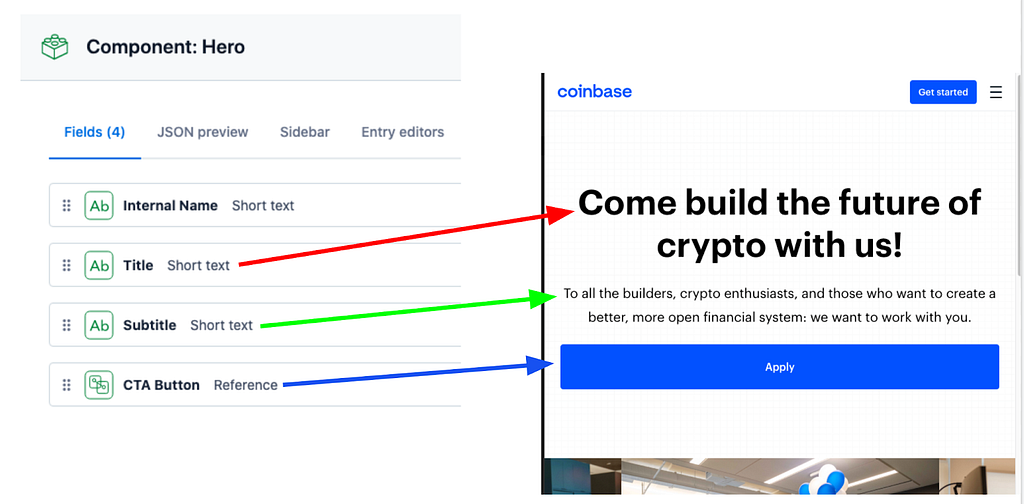
By creating a thoughtful “Block-based system” (and reworking our existing landing pages to use this system), we were able to efficiently migrate nearly all landing pages to a single frontend application, powered by React, and integrated with Contentful.
Once the block system was in place, migrating pages was a relatively simple task of dragging / dropping various blocks via the Contentful UI, and redirecting the old page routes to the new, CMS-driven alternative.
Post-Project Flightsuit, our team focused on improving the usability and resiliency of the CMS. A few lessons learned:

3. Training new engineering teams on working with and extending the CMS was a primary focus. My team had become the sole source of knowledge of an increasingly-used system and were often sourced to onboard new engineers to the system on a one-off basis. To better spread the knowledge of the framework, we developed the CMS Ambassador Program, which aimed to train and bring together subject matter experts for the CMS throughout the company. The program begins with a 1.5 hour structured workshop where attendees learn the ins and outs of integrating with the CMS. While this program is currently driven in real-time and onboarding sessions are held as-needed, we are currently in the process of converting this to a self-service course via an internal training tool.

As 2021 comes to a close, we’re proud to look back at how far we’ve come over the past year. Here is the progress we’ve seen after successfully implementing our company-wide CMS:
These efficiency gains have been achieved thanks largely to our leadership’s investment in infra and developer tooling. Coinbase truly cares about engineering excellence, developer experience, and automating routine processes.
We also couldn’t have achieved this without the hard work of some astoundingly thoughtful, talented individuals (each of whom I’m incredibly proud to work with):
We’re all excited to enter 2022 with a shiny, unified frontend and minimal one-off content change requests on the horizon. If you’re interested in joining Coinbase, check out our Careers page here. Here’s to a happy new year!
Scaling Content at Coinbase was originally published in The Coinbase Blog on Medium, where people are continuing the conversation by highlighting and responding to this story.

The venture capital firm will fund companies in the interactive sector that combine content, finance and tech.
Galaxy Interactive, a venture capital firm focused on next generation interactive technolo, has announced it has raised $325 million for its second fund from 70 different investors.
The fund is focused on virtual and augmented reality, artificial intelligence, and blockchain-based games.
In an Oct. 19 announcement, Galaxy Digital, the majority owner of Galaxy Interactive, stated that $150 million from the fund has already been allocated to new portfolio companies including Republic, 1047 Games, Elodie, ROAR, Art Blocks and Masterworks with other additional investments to be announced in coming months.
Established in 2018 by general partners Sam Englebardt and Richard Kim, the company now has more than $650 million in assets under management and has invested in more than 75 companies.
Englebardt describes the interactive sector as “the intersection of content, finance and tech” and believes it will drive considerable growth. The firm is notably focused on digital collectibles and the Metaverse, as Englebardt believes digital ownership via NFTs is a foundational pillar for a more immersive version of the internet.
https://t.co/ZcivfAllE2
— Sam Englebardt (@samenglebardt) October 19, 2021
What would you invest in if you believe, as @galaxyRTK and I so fundamentally do, that younger generations are moving en masse from the physical to the digital world?
May you live in interesting times… @galaxyRTK @novogratz
Mike Novogratz, Founder and CEO of Galaxy Digital, said the two general partners had seen the potential of the sector very early on:
"They [Englebardt and Kim] were the first people to pound my desk insisting that gaming and digital objects — which weren't even called ‘NFTs’ yet — would provide the biggest opportunity for blockchain technology to scale and that Galaxy Digital needed to specialize in this space.”
Related: Bitfury CEO confirms IPO considerations are part of expansion plans
Money is flowing into the sector with Bitkraft Ventures, one of the biggest investors in game and eSports startups launching a $75 million token fund earlier this month focused on blockchain gaming and digital entertainment.
Outside of interactive content, reports surfaced today that Multicoin Capital intends to raise $250 million by the end of 2021 for a third venture fund aimed at crypto startups.
In June, Andreessen Horowitz raised its third crypto fund, at a $2.2 billion valuation, making it the biggest-ever crypto venture fund.